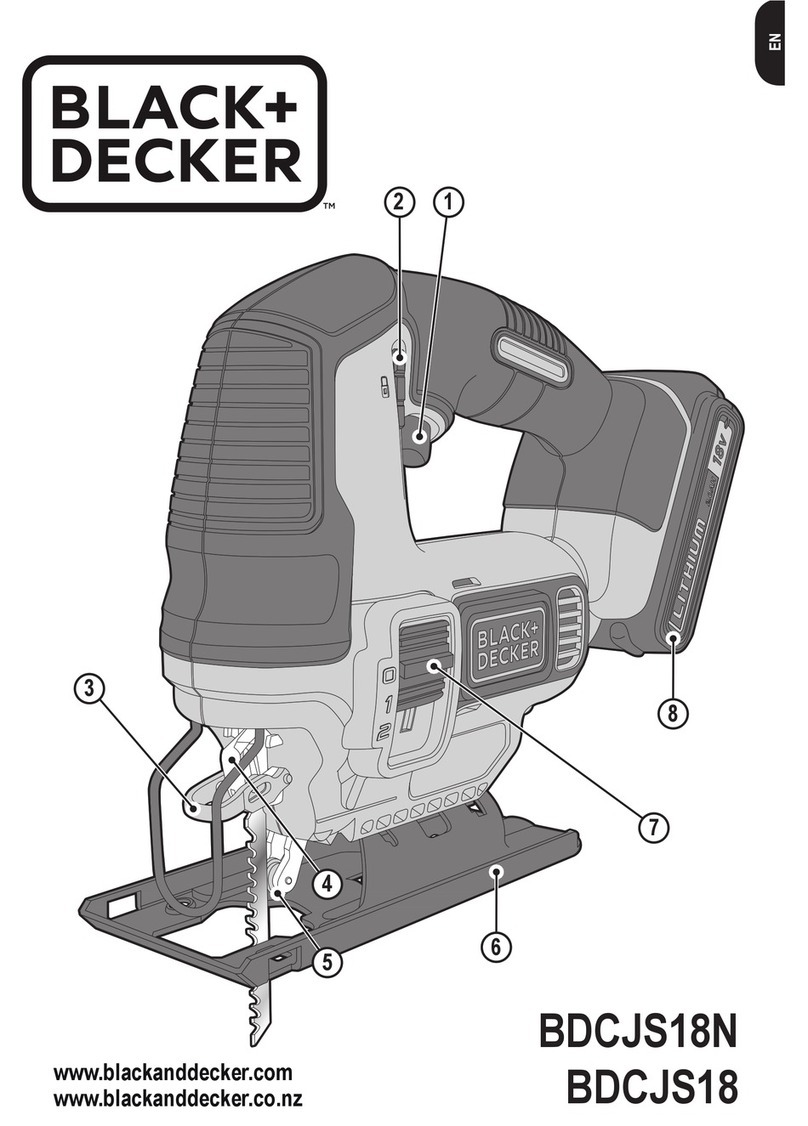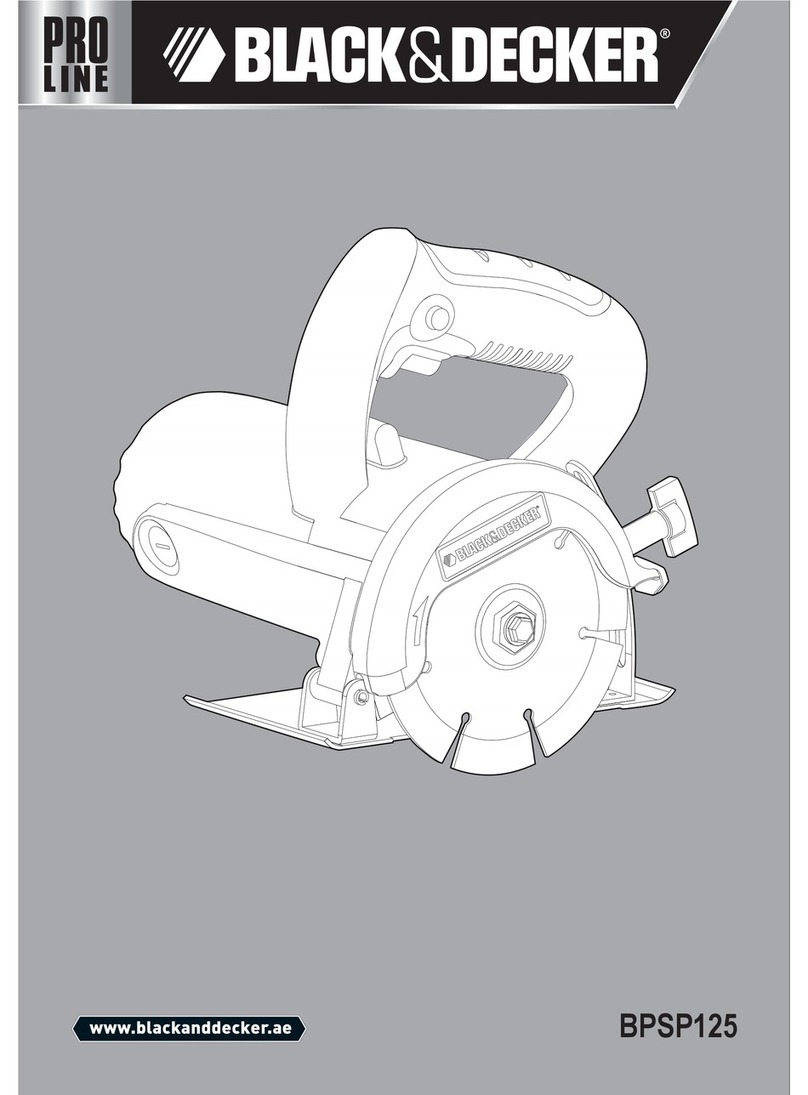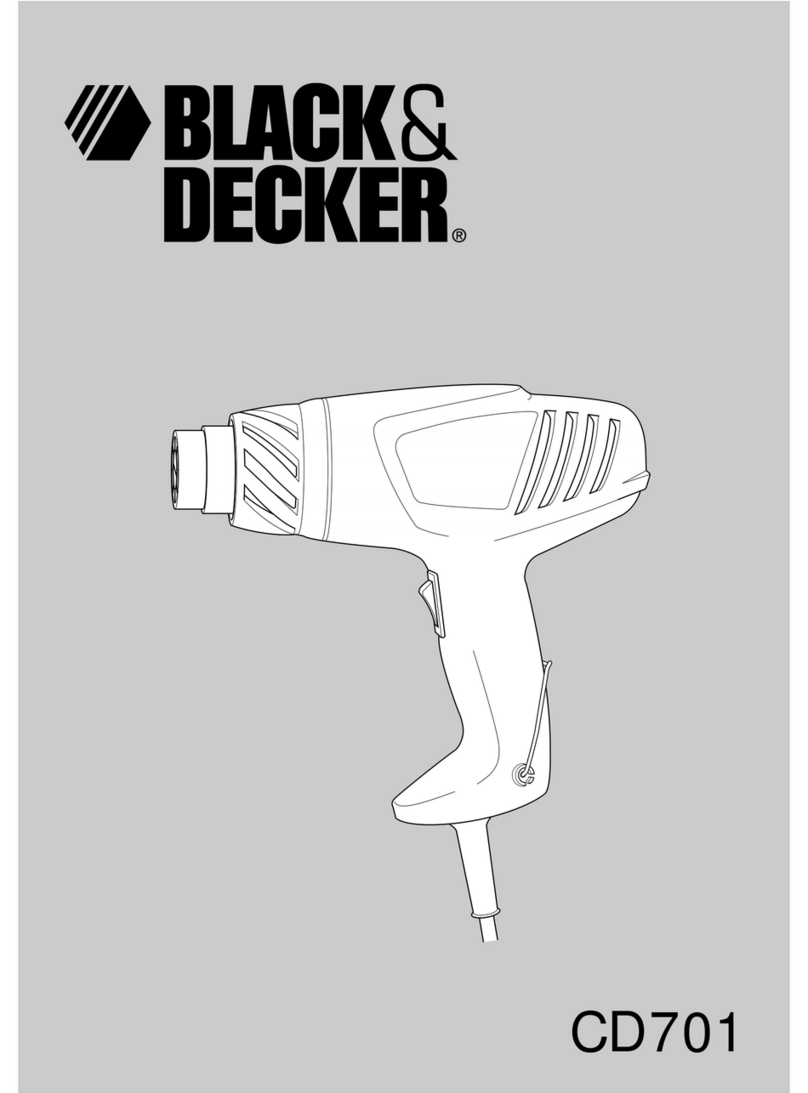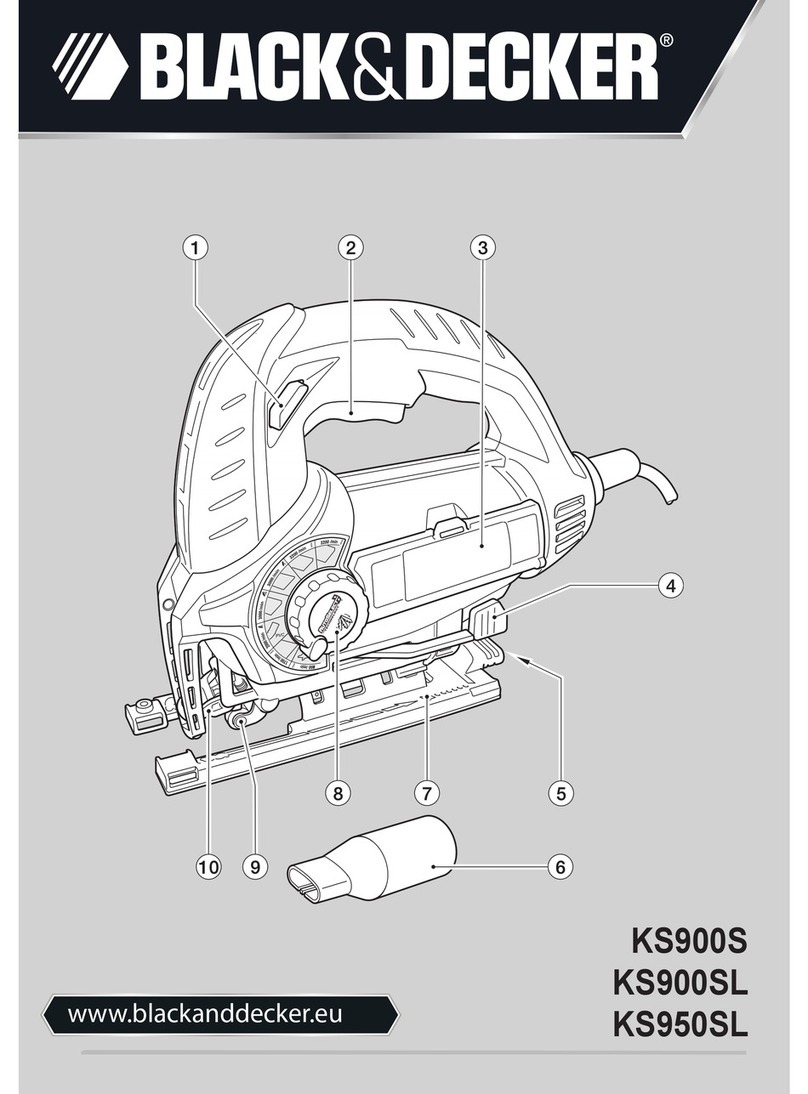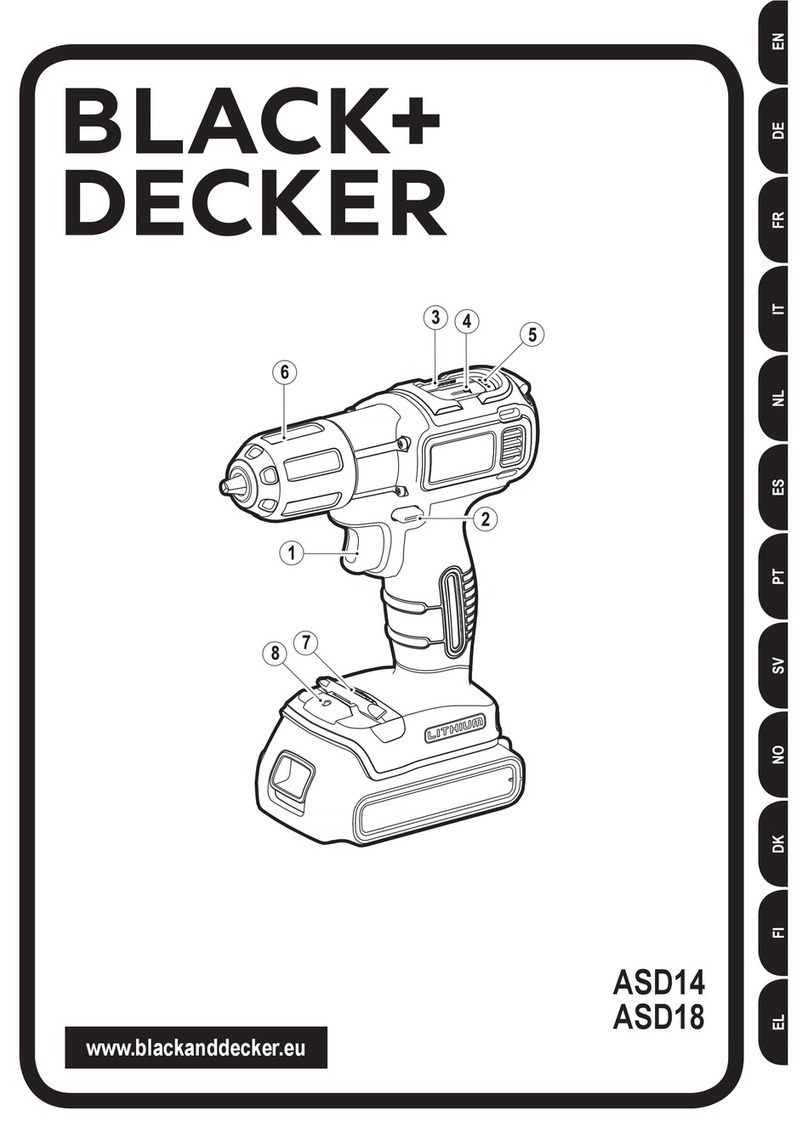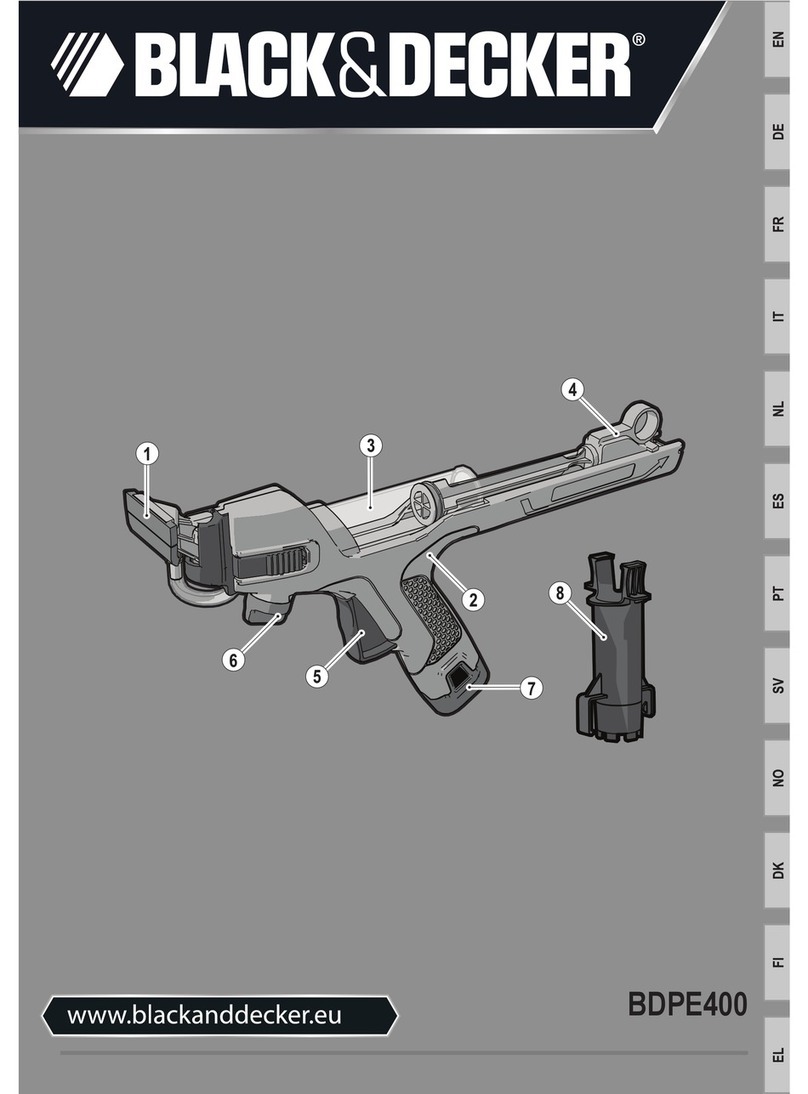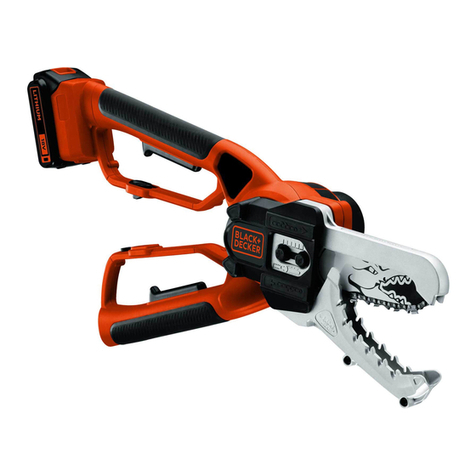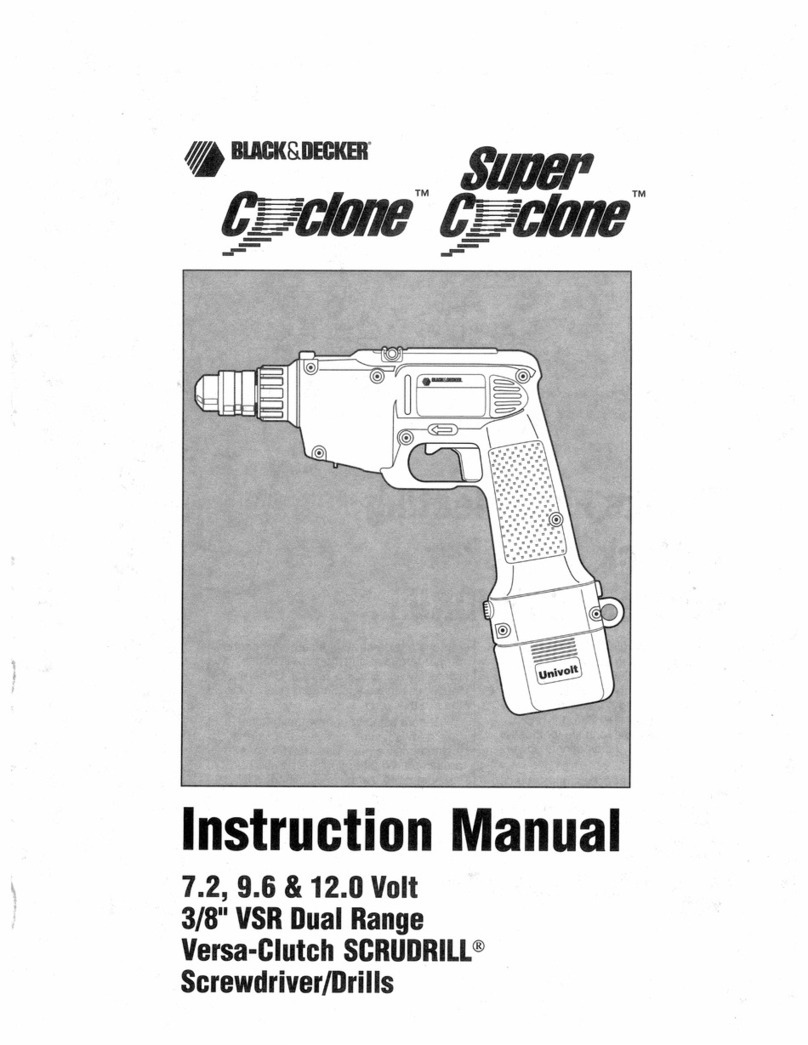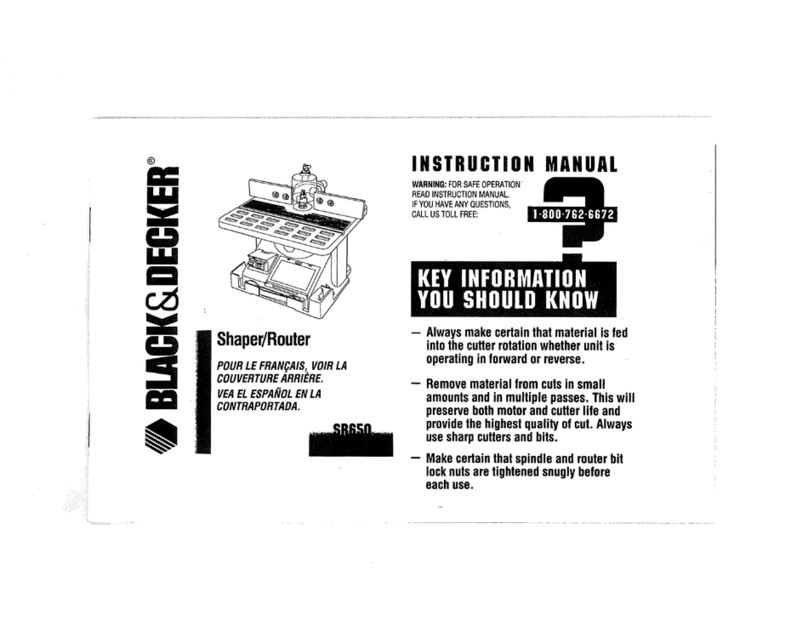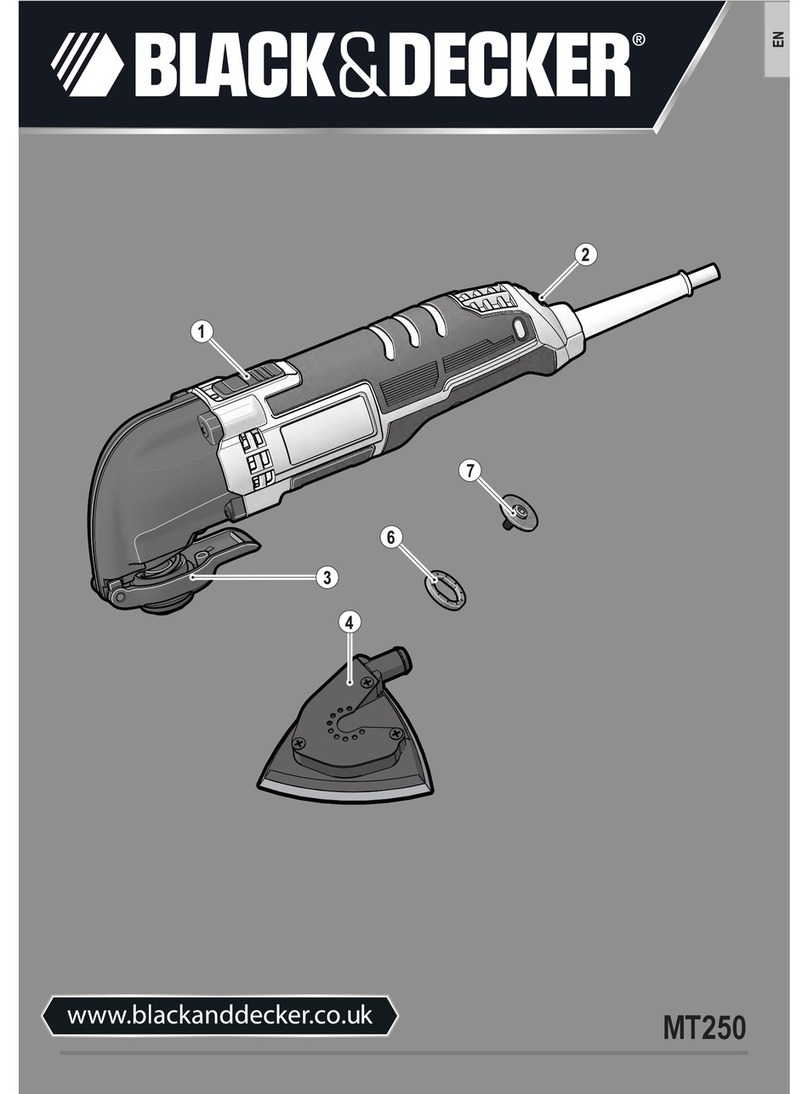
7
ENGLISH
the power tool. Power tools are
dangerous in the hands of untrained
users.
e. Maintain power tools. Check for
misalignment or binding of moving
parts, breakage of parts and any
other condition that may affect the
power tools operation. If damaged,
have the power tool repaired before
use. Many accidents are caused by
poorly maintained power tools.
f. Keep cutting tools sharp and clean.
Properly maintained cutting tools with
sharp cutting edges are less likely to
bind and are easier to control.
g. Use the power tool, accessories and
tool bits etc. in accordance with
these instructions, taking into
account the working conditions and
the work to be performed. Use of the
power tool for operations different from
those intended could result in
a hazardous situation.
h. Keep handles and grasping
surfaces dry, clean and free from oil
and grease. Slippery handles and
grasing surfaces do not allow for safe
handling and control of the tool in
unexpected situations.
5. Battery tool use and care
a. Recharge only with the charger
specied by the manufacturer.
A charger that is suitable for one type
of battery pack may create a risk of re
when used with another battery pack.
b. Use power tools only with
specically designated battery
packs. Use of any other battery packs
may create a risk of injury and re.
c. When battery pack is not in use,
keep it away from other metal
objects, like paper clips, coins,
keys, nails, screws, or other small
metal objects, that can make
a connection from one terminal to
another. Shorting the battery terminals
together may cause burns or a re.
d. Under abusive conditions, liquid
may be ejected from the battery;
avoid contact. If contact
accidentally occurs, ush with
water. If liquid contacts eyes,
additionally seek medical help.
Liquid ejected from the battery may
cause irritation or burns.
e. Do not use a battery pack or tool
that is damaged or modied.
Damaged or modied batteries may
exhibit unpredictable behaviour
resulting in re, explosion or risk of
injury.
f. Do not expose a battery pack or tool
to re or excessive temperature.
Exposure to re or temperature above
130 ºC may cause explosion.
g. Follow all charging instructions and
do not charge the battery pack or
tool outside the temperature range
specied in the instructions.
Charging improperly or at
temperatures outside the specied
range may damage the battery and
increase the risk of re.

